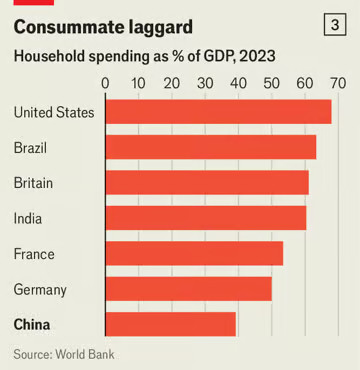In “normal” economic theory any trade deficit or surplus will be corrected by rising or falling currency prices. If you run a deficit too high nobody will want any more of your currency and the price will start falling. Same with a trade surplus; if everyone is buying your stuff nobody can’t find enough of your currency to pay for it and your currency will rise in price.
In the real world China is printing yuans like there is no tomorrow and the US Dollar has a mythical “reserve currency” status meaning everybody still wants them even when they are drowning in the stuff.
These realities block “normal” mechanisms to correct the trade surplus/deficit. China, Japan, the Middle East are sitting on stupid large mountains of US Dollars that they can’t use for fear of tanking the market. So they just keep buying more US paper.
The US meanwhile has effectively stopped caring and is printing dollars with abandon.
Sometimes this unsustainable and irresponsible stuff leaks through to consumer goods. Then everyone is complaining about high prices, when your government and the FED have been YOLOing with the debt (and therefore the amount of dollars in the world) since Reagan. That the US is not experiencing Zimbabwe level inflation is unexplainable by classic economics.
There is no real benefit for China to keep buying stockpiling dollars and every other large currency look better managed. But still oil is paid for in Dollars.
Trump only sees the currency manipulation on one (the other) side. He sees the negative trade balance and simply doesn’t understand what weird stuff has to happen to keep that going for as long as it has. He thinks that the world extending the US an endless line of credit is unfair to the US while it has allowed the US to live well above their means since the 80s.
